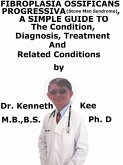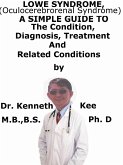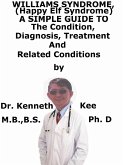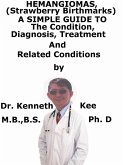While reading about genetic diseases, I came across this disease called hypertrichosis (which means excessive hairs on the body)
There was also a story in the Middle Ages of a family originally from Canary Islands with a father Petros Gonzales who look like a wolf man and his normal wife and 2 daughters who were as hairy as the father.
It reminded me of the story Beauty and the Beast.
Hypertrichosis, also called werewolf syndrome, is a disorder featured by excessive hair growth anywhere on a person's body
Hypertrichosis can be congenital (present at birth) or acquired (arises later in life).
The unusual hair growth may cover the face and body or happen in small patches.
Congenital hypertrichosis
This is a genetic disease that is be inherited in an autosomal dominant manner.
Using fluorescence in situ hybridization (FISH), doctors identified a pericentric inversion of chromosome 8, inv (8) (p11.2q22) with an insertion of the q23-24 region into a more proximal region of the long arm of chromosome 8, most probably at the q13 band, and a complex deletion in 8q23 encompassing four separate chromosomal breakpoints
A mutation in MAP2K6 is believed to cause Terminal Hypertrichosis.
Acquired hypertrichosis
Unlike congenital hypertrichosis, the acquired form of the disease is likely to form later in life.
It causes 2 types of hair other than lanugo: vellus hair or terminal hair.
Excessive hair may form in small patches or on all hair-growing regions of a person's body.
Acquired hypertrichosi depicts excess hair growth that forms in a person after birth.
The hair is normally un-pigmented vellus hair or may have pigmented terminal hair.
Excess hair growth may be localized to a particular region or generalized and spreading over all hair-bearing areas of the body.
Drugs most often produce acquired generalized hypertrichosis:
1. Antibiotics such as streptomycin
2. Anti-inflammatory drugs such as benoxaprofen and corticosteroids
3. Vasodilators (diazoxide, minoxidil, prostaglandin E1)
4. Diuretics (acetazolamide)
5. Anticonvulsants (phenytoin)
6. Immunosuppressives (cyclosporine, mycophenolate mofetil)
7. Psoralens (methoxypsoralen, trimethylpsoralen)
8. Antiseptic agents (hexachlorobenzene)
9. Chelators (penicillamine)
10. Interferon-alpha
11. Fenoterol
12. EGFR inhibitors (cetuximab, panitumumab, erlotinib, gefitinib)
While drugs are normally the cause, acquired generalized hypertrichosis can also be observed in:
1. Traumatic brain injuries,
2. Juvenile hypothyroidism,
3. Juvenile dermatomyositis,
4. Acromegaly,
5. Malnutrition, and
6. Advanced HIV infection.
The diagnosis of hypertrichosis is made on medical and histological findings of the hair
Lanugo hairs are likely to be non-pigmented.
Vellus hair can be pigmented or non-pigmented
Treatment
The medical treatment of eflornithine (Vaniqa cream) 13.9% or the hair removal by methods of repeated shaving, depilatory methods (e.g., chemical, electric methods), or bleaching can cause an improvement in the hypertrichosis patient's appearance.
Antidepressant medicines may be required in patients with psychological depression.
Laser hair removal has been indicated as a treatment method but there are conflicting reports about the efficacy of lasers in eliminating the vellus hairs in congenital hypertrichosis lanuginosa.
40-80% reduction in unwanted hair is obtained using the Q-switched Nd:YAG laser after the application of a topical carbon-based solution.
This therapy is a well-tolerated method of hair removal in children since the lower fluencies required led to reduced pain during treatment
TABLE OF CONTENT
Introduction
Chapter 1 Hypertrichosis (Werewolf syndrome)
Chapt...
Dieser Download kann aus rechtlichen Gründen nur mit Rechnungsadresse in A, B, CY, CZ, D, DK, EW, E, FIN, F, GR, H, IRL, I, LT, L, LR, M, NL, PL, P, R, S, SLO, SK ausgeliefert werden.









